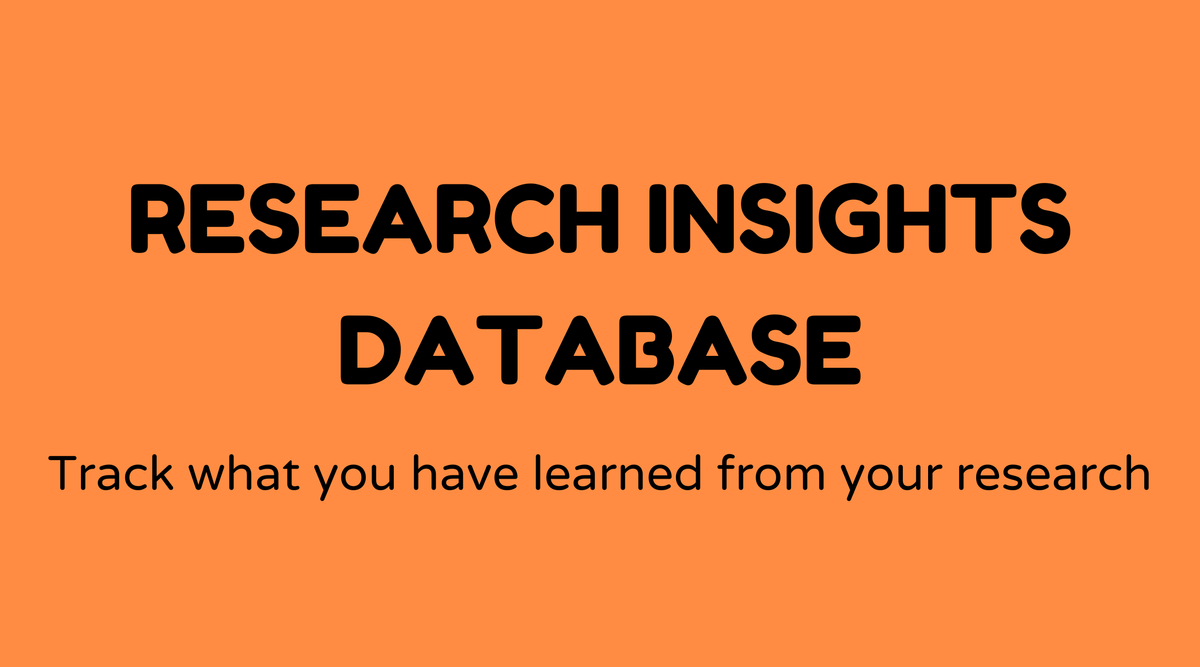Research insights database

Overview of Research Insights Database:
Remaining competitive and well-informed in today's fast-paced environment requires easy access to essential information and knowledge. A Research Insights Database serves as a valuable resource for businesses, academic institutions, and researchers across the globe. These databases centralize content, making it accessible, searchable, and manageable, which helps users quickly identify insights and trends from extensive datasets.
In a time where data-driven decisions are essential, a research insights database must excel in usability and functionality. Imagine having the ability to effortlessly access a wealth of accumulated research findings. Platforms like Data.gov and JSTOR host countless articles, reports, and studies that benefit educational institutions and organizations alike. Feel free to investigate these platforms to better understand the nature of research databases and how they contribute to data-driven decision-making.
Why Research Insights Database Matters:
The ability to harness and comprehend research insights can greatly influence innovation and strategic planning. Businesses and researchers who actively engage with a research insights database enjoy various benefits:
- Efficiency: It minimizes the time needed for data collection, allowing greater focus on analysis.
- Resourcefulness: With readily available information, researchers can build upon previous work rather than starting anew.
- Informed Decision-Making: Access to well-organized research insights supports superior decision-making, essential for success.
When selecting a research insights database, choosing platforms such as Google Scholar and ResearchGate, which feature strong search functionalities and reputable publications, can enhance the quality of the insights obtained.
What is a Research Insights Database:
At its essence, a Research Insights Database functions as a repository of data, whether structured or unstructured, aimed at storing knowledge derived from research activities. This may encompass qualitative and quantitative data, survey outcomes, case studies, literature reviews, and beyond. Essentially, it acts as a library for data that stakeholders can access and utilize to draw meaningful insights.
The structure of these databases varies worldwide; however, they typically include metadata, which facilitates searching through descriptive keywords, tags, and categorizations. Consider institutions such as ICPSR at the University of Michigan, which provides easy access to a broad spectrum of data that supports social science research.
How to Manage a Research Insights Database:
Building and managing a research insights database can seem overwhelming, but it becomes manageable with a structured approach:
-
Define Your Scope: Begin by determining the type of data to be collected and how it will be utilized, keeping user needs in mind.
-
Choose the Right Platform: Decide whether a custom-built solution or existing database services like Airtable or Tableau can meet your requirements.
-
Collect Data: Employ surveys, research papers, experiments, or other data-gathering techniques as needed. Ensure the information is relevant and trustworthy.
-
Data Entry and Organization: Input the data into your selected platform, ensuring consistent formatting and metadata tagging.
-
Regular Maintenance and Updates: Keep the database current with new insights while ensuring that older data remains relevant and accurate.
Being diligent during the planning and structuring process leads to more efficient use and greater value derived from your research insights database.
Examples of Research Insights Database:
To illustrate, consider these reputable research databases:
- PubMed: A primary resource for biomedical research, funded by the U.S. government.
- ERIC (Education Resources Information Center): Grants access to education literature and resources.
- WIPO Pearl: Supports innovations and intellectual property research.
Each serves a distinct purpose and exemplifies the varied applications of research insights databases across different fields.
FAQs
- What are the benefits of using a research insights database?
- These databases centralize information, enhance time efficiency, and improve decision-making through organized and comprehensive data collection.
- How secure are research insights databases?
- They are typically secure when hosted on reputable platforms that adhere to stringent data protection standards such as encryption and regular security audits.
- Can anyone access a research insights database?
- Access often depends on the database's nature; some databases are publicly accessible, while others may restrict access to authorized users, like university consortiums.
- How often should a research insights database be updated?
- Regular maintenance and updates are essential to ensure data accuracy and relevance. Depending on the database, updates might occur monthly, quarterly, or annually.
- What types of data can be stored in a research insights database?
- It can accommodate qualitative and quantitative research data, survey results, case studies, experimental findings, and reports, among others.
- How to select the right research insights database platform?
- Assess based on your needs, the data type you will manage, ease of use, scalability, and cost. Reputable platforms like Tableau and Google Data Studio provide strong features for data management and reporting.



